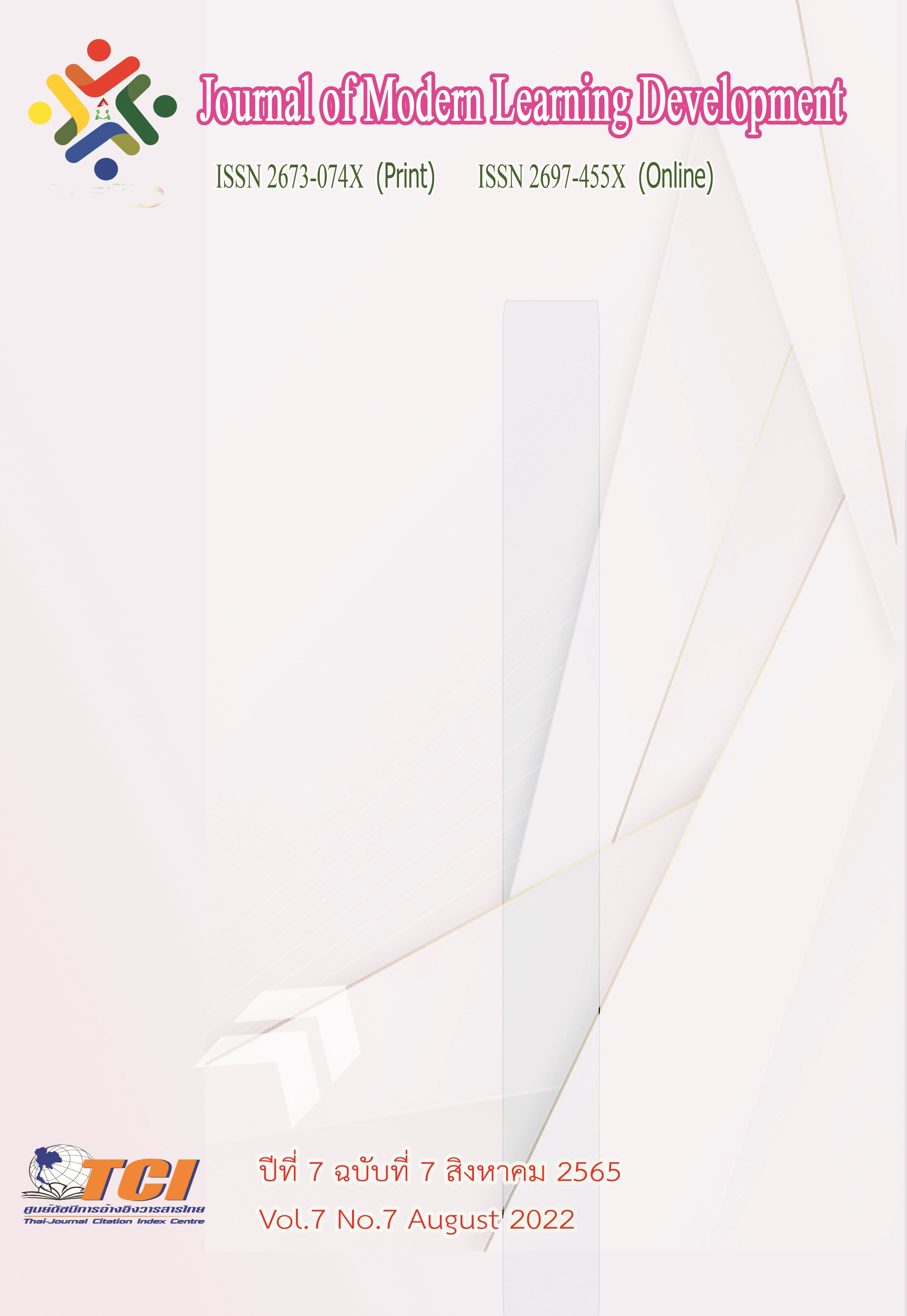The Participatory Administration in the Development of the Sufficiency Economy Villages in Khao Suan Kwang District Khon Kaen Province
Main Article Content
Abstract
The objectives of this research were: (1) to study the participatory administration in the development of sufficiency economy villages, Khao Suan Kwang District, Khon Kaen Province; (2) to propose guidelines for the participatory administration in the development of sufficiency economy villages in Khao Suan Kwang District. This study was conducted employing a mixed research method. The samples were 375 participants, selected by simple random sampling from 26 sufficiency economy villages in Khao Suan Kwang District. The key informants selected by purposive sampling were 12 participants. involved in driving the development of sufficiency economy villages in Khao Suan Kwang District.The statistics used in the data analysis were: Frequency, Percentage, Mean and Standard Deviation. The obtained data were interpreted by the content analysis.
The research results were as follows:
1) The participatory administration in the development of sufficiency economy villages in Khao Suan Kwang in overall aspect and every studied aspect was statistically rated at a high level. The aspect with the highest mean was ‘participation in receiving benefits,' followed by ‘participation in monitoring and evaluation,' 'participation in decision making.' The aspect with the lowest mean was ‘participation in the operation.'
2) The guidelines for the participatory administration in the development of sufficiency economy villages in Khao Suan Kwang District in four aspects were as follows:
Participation in decision making: the integration and collaboration between government agencies and networks inside and outside the community should be conducted to allow all sectors to work together with the government equally.
2. Participation in operations: community should be involved in government operations to listen to the opinions and needs of the people, and find a pilot point (kick-off) to clarify operations at the district level.
3. Participation in receiving benefits: a network between government agencies, the private sector, and the community should be created so that the community has a thorough knowledge and understanding of the benefits from projects.
4. Participation in monitoring and evaluation: the responsible person for directing the system and mechanisms for working together should be determined. There should be an internal management audit system and auditing from external agencies.
Article Details
References
ธันยชนก ปะวะละ. (2561). การพัฒนาชุมชนต้นแบบตามหลักปรัชญาของเศรษฐกิจพอเพียงระดับมั่งมี ศรีสุข: กรณีศึกษาบ้านหนองเผือก อำเภอวาปีปทุม จังหวัดมหาสารคาม. วารสารเกษตรพระวรุณ. 15 (1), 101-111.
ธีรวุฒิ เอกะกุล. (2543). ระเบียบวิธีวิจัยทางพฤติกรรมศาสตรและสังคมศาสตร. อุบลราชธานี: สถาบันราชภัฎอุบลราชธานี.
สำนักงานคณะกรรมการพัฒนาเศรษฐกิจและสังคมแห่งชาติ. (2560). แผนพัฒนาเศรษฐกิจและสังคมแห่งชาติ ฉบับที่ 12 พ.ศ.2560-2564 ยุทธศาสตร์ชาติ 20 ปี พ.ศ.2560-2579. กรุงเทพมหานคร: วิจารณ์พานิช.
สุธาวี กลิ่นอุบล. (2562). การศึกษาการมีส่วนร่วมของชุมชนต่อความสำเร็จในการพัฒนาชุมชนตามแนวทางปรัชญาของเศรษฐกิจพอเพียง บ้านหัวเขาจีน ตำบลห้วยยางโทน อำเภอปากท่อ จังหวัดราชบุรี. วิทยานิพนธ์ศึกษาศาสตรมหาบัณฑิต สาขาวิชาพัฒนศึกษา. บัณฑิตวิทยาลัย: มหาวิทยาลัยศิลปากร.


